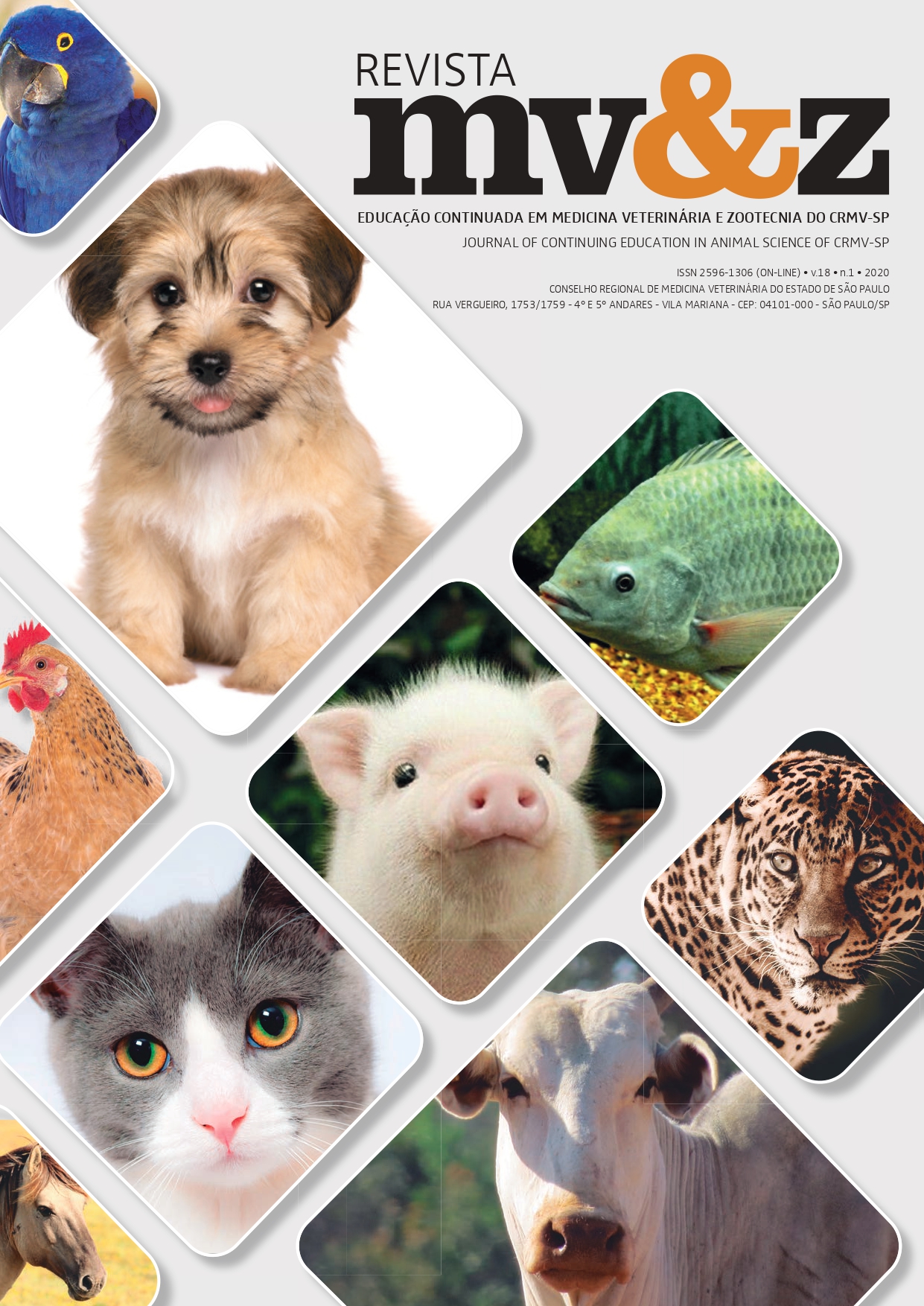Metacercariae (Platyhelminthes: Digenea) in freshwater ornamental fish species in southeastern Brazil: case report Metacercariae (Platyhelminthes: Digenea) in freshwater ornamental fish species in southeastern Brazil: case report
Main Article Content
Abstract
Metacercariae are digenetic trematode larvae commonly encapsulated in gills, skin, muscles and internal organs and are generally not harmful to animals when in low numbers, but in high infestations can lead to death. The present study reports metacercariae infections in 58 freshwater ornamental fishes from producers in two municipalities of the state of São Paulo (Iguape and Jacareí), Southeastern Brazil. After analysis, 13% of the animals (8/58) had metacercariae encysted in subcutaneous tissue and 43% (25/58) presented metacercariae encapsulated in gills. These results highlight the importance of the Veterinary in the sanitary control of fish, with the ability to identify agents, establish diagnoses and from there develop biosecurity control programs in the production systems of ornamental aquatic organisms, in order to ensure the viability of the fish business, promote animal welfare, reduce manageable losses and contribute to its role for animal and environmental health as a whole.
Article Details

This work is licensed under a Creative Commons Attribution-NonCommercial-NoDerivatives 4.0 International License.
1. Autores mantém os direitos autorais e concedem à revista o direito de primeira publicação, com o trabalho licenciado sob a Creative Commons Atribuição-NãoComercial-SemDerivações 4.0 Internacional
2. Autores têm autorização para assumir contratos adicionais separadamente, para distribuição não-exclusica da versão do trabalho publicada nesta revista (ex.: publicar em repositório institucional ou como capítulo de livro), com reconhecimento de autoria e publicação inicial nesta revista.
3. Autores têm permissão e são estimulados a publicar e distribuir seu trabalho online (ex.: em repositórios instituicionais ou na sua página pessoal) a qualquer ponto antes ou durante o processo editorial, já que isso pode gerar alterações produtivas, bem como aumentar o impacto e a citação do trabalho publicado (Veja O Efeito do Acesso Livre);
